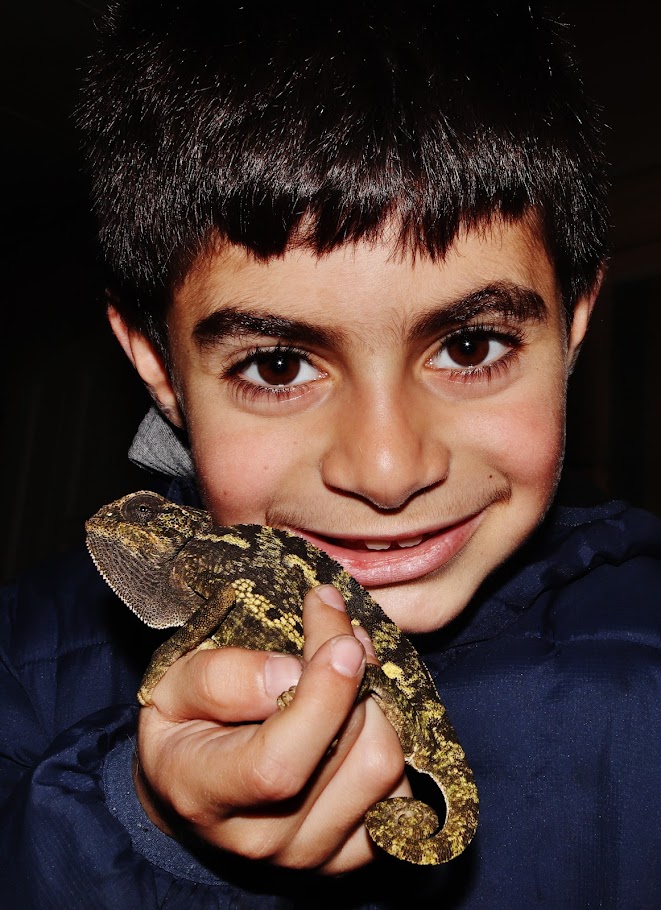See also
The eleven lizards of Cyprus - Τα έντεκα είδη σαυρών τις Κύπρου
Προστατεύεται από την Σύμβαση της Βέρνης (Παράρτημα ΙΙ/ΙΙα)
The common chameleon or Mediterranean chameleon (Chamaeleo chamaeleon) is the only species of Chamaleonidae with a range that extends into Europe.
The common chamaeleon like others of its family enjoys an arboreal habitat, scrambling about in trees and bushes with feet that have four toes, two on each side for grasping branches. It also uses its prehensile tail to maintain balance and stability. Movement is usually leisurely, often with a slight swaying motion to avoid detection by predators. The animal can move more rapidly when involved in a territorial dispute. They are usually solitary animals which maintain a territory and only tolerate members of the opposite sex during the mating season. Average length of the common chameleon is from 20 to 40 cm, with females often being substantially larger than males. The colour of the common chameleon is variable, between yellow/brown through green to a dark brown. Whatever the background colour is the common chameleon will have two light coloured lines along its side. It has a small beard of scales and some small hard scales on the top of its back. Many assume the color changes undergone by the chameleon are a result of its attempting to camouflage itself, when in reality the chameleon changes its color as a response to light and temperature stimuli and as an expression of its emotions (like chameleon body language). Often when caught for analysis, the chameleon may turn a dark color, Their colors are also important for interspecies communication, especially during the mating season.
The Common Chamaeleon is insectivorous, capturing insects by stealth and the rapid extension of its long tongue which has a terminal pad which grasps and adheres to the prey. Adults are known to eat young chameleons and have been observed to eat fruit. In Europe, it is found in Greece (Aegean Islands, Crete, Chios, Samos), Malta, southern Portugal, southern Spain, and Cyprus. It was reportedly introduced to the island of Sicily, Italy, but its presence was never confirmed and a small, probably introduced, population is reported to be present in Apulia in southeastern Italy. In North Africa and the Middle East, it occurs in Morocco, Algeria, Tunisia,Libya, Egypt, Israel, Palestine, Jordan, Western Sahara, Saudi Arabia, Yemen, Lebanon, Syria, Iraq, and Iran. In Greece the species is now only found on the island of Samos, having disappeared from the other islands in recent years. Conservation efforts on Samos are being led by the institute of Marine Biology Archipelagos to preserve the remaining populations, but the species is not currently evaluated under the IUCN redlist. From Wikipedia, the free encyclopedia
Photos and video Nicosia by George Konstantinou






















Just seen my first one in emba
ReplyDelete